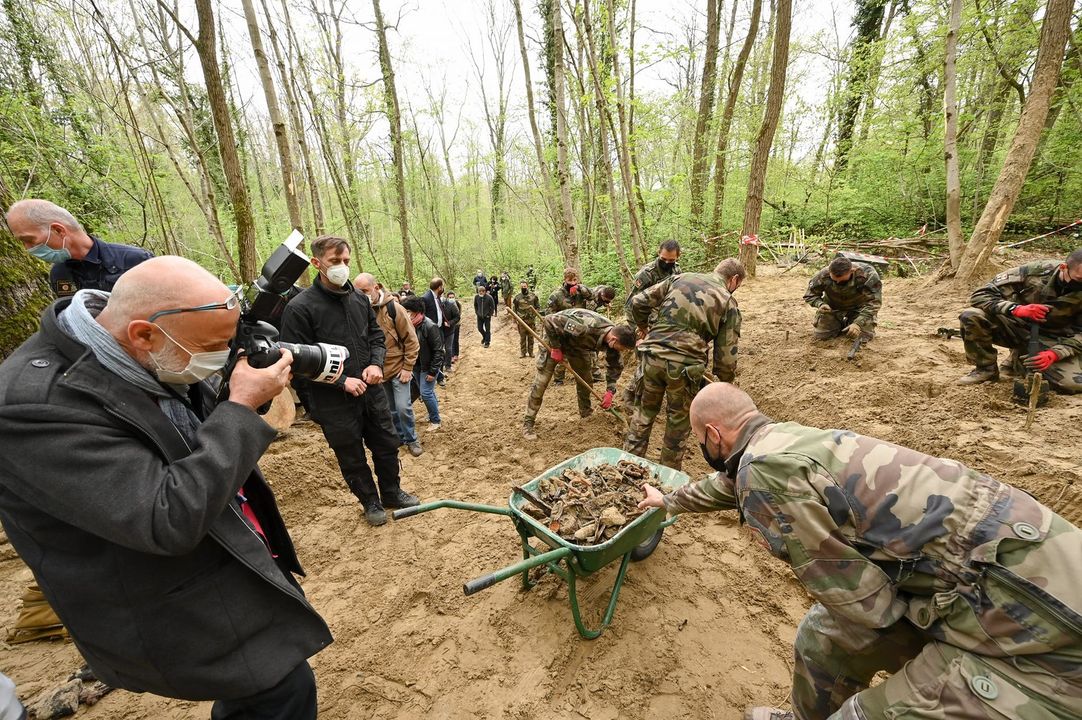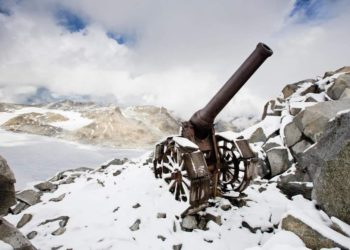Winterburg Tunnel: The Tunnel of Death

By Spring 1917, the Germans had controlled a crest overlooking the Chemin des Dames for over two years. The French were preparing an offensive in that sector and needed to secure that hill first and foremost.
It was known to the French that the Germans had fortified the sector and built a tunnel through the hill itself to be able to safely resupply their front line trenches. That tunnel had been dug 20 metres deep and was 300 metres long.
The May 5th Offensive
On the 5th of May, French Naval Guns brought to the front targeted both ends of the tunnel. WWI artillery was usually famously inaccurate but this time, the French used observation balloons to direct their fire. French shells scored several hits and near-hits on both sides of the tunnel, collapsing both ends and trapping over 270 German soldiers belonging to the 111th Reserve Regiment.
The fighting in that sector was so intense that the Germans were unable to dig and look for their friends, trapped underground and doomed to a slow agonising death.
7 days after the initial shelling, as the Germans were preparing to evacuate their positions in the face of yet another strong French assault; and through pure luck; they somehow managed to free-up three of their comrades. One of them spoke of a week in hell, inside that tunnel: People going delirious with thirst, many, feeling the end coming, committing suicide or begging their friends to shoot them… The men of the 111th Regiment took 7 days to die.
Post-assault Situations
The French took the position the next day and were too busy defending in the face of German counterattacks to investigate. Later on, the Germans recaptured the position. By then, looking for the bodies of deceased soldiers was not a priority.
The war came to an end, nature took over and the tunnel laid forgotten, its exact whereabouts unknown as time went by.
However, a local man called Alain Malinowsky did not forget about the “Tunnel of Death”. In fact, he spent 15 years accumulating old maps and studying archives. When he was sure he knew where the Winterburg Tunnel was, he dug up a shaft and found plenty of artefacts confirming he had found it. He immediately closed the shaft and alerted the authorities… Said authorities were not interested! After several unfruitful years of trying to convince the French government to do something, he contacted a national newspaper (Le Monde) and went public! That was in 2021.
Debate and Resolution
For two years, French and German authorities have been debating on what to do… Leave the dead be or excavate them, identify them and re-bury them in a German war cemetery…
Some historians were excited: The tunnel was also home to those men: They ate and slept there in between battles.

Experts expected to find well preserved mummified corpses, tools, weapons and a trove of personal effects and everyday objects. The tunnel might contain the biggest collection of WWI artefacts ever uncovered…
But Germany’s war grave commission, the Volksbund, and the French government have decided otherwise! For two years, French authorities have tried to reach the tunnel, digging through unstable sandy ground, still heavily contaminated with live ammunition and unexploded ordnance. The endeavour is simply too dangerous. Instead, German and French authorities have decided that the site will become an official war memorial and the tunnel consecrated as a military cemetery under state protection.

They hope planning permission will be delivered by the local administration as early as next year.
-RBM









